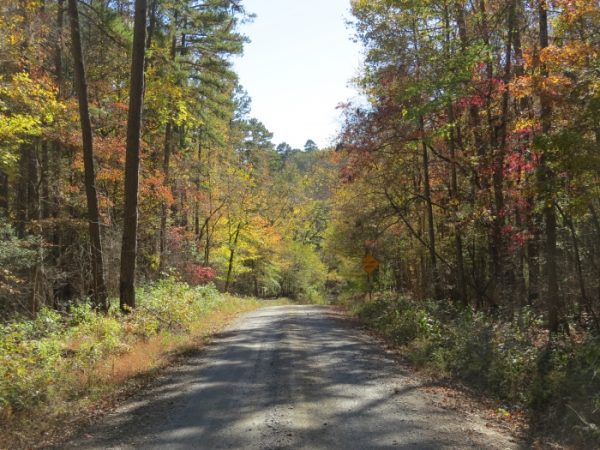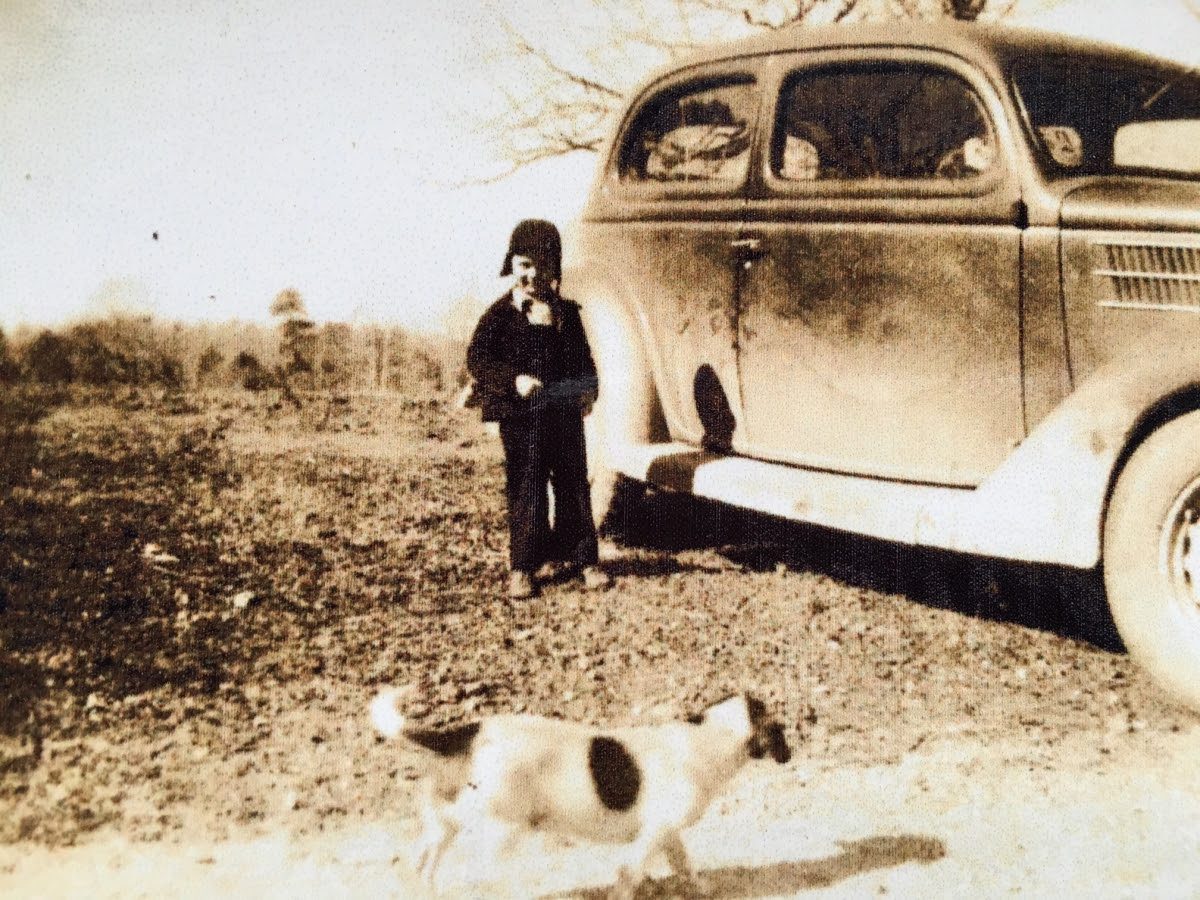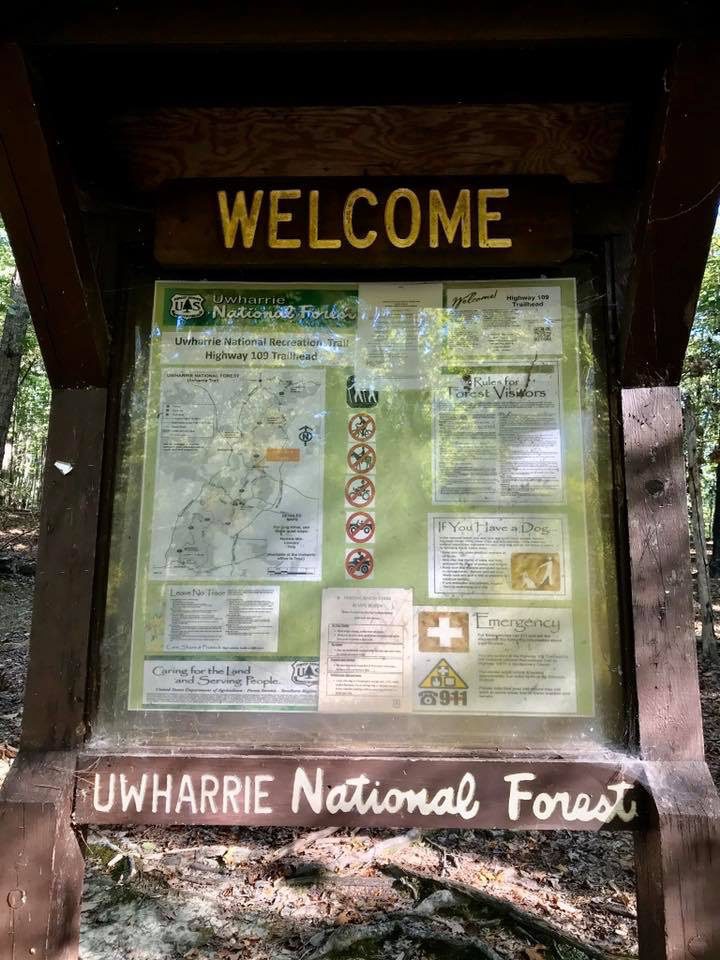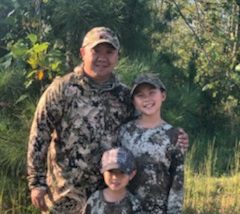A changing landscape: Who are the Uwharries for?

In the years after World War II, my dad could roam the Uwharries with his .22 and his trusty squirrel dog, a feist named Spot. A boy didn’t have to worry about trespassing on a neighbor’s property; he only had to avoid the occasional moonshine still.
Deer and turkey were virtually extirpated in the region, halfway between Charlotte and Raleigh, overharvested by previous generations of struggling subsistence farmers. The American shad, which had inspired locals to protest mill dams on the Uwharrie River in 1805, no longer migrated to the river’s upper reaches. Instead, this was the golden age of small game – rabbit, squirrel, dove and quail.
The Carolinas Urban-Rural ConnectionA special project from the UNC Charlotte Urban Institute |
|---|
Despite changes in land use — and an influx of outdoor enthusiasts from across the Piedmont and beyond — boys (and girls) in the Uwharries can still enjoy a reasonable facsimile of my dad’s experience, assuming they can tear themselves away from their screens. The area’s steadily growing range of recreational opportunities provides an opportunity to draw in more visitors from across the region — but also poses challenges for locals used to long-standing traditions like hunting.
[Read more: Lessons for using recreation as an economic development tool]
The federal government started buying land in the area during the Great Depression. People now scoff at the price, but at the time, a dollar an acre was welcome compensation for worn-out farmland prone to erosion along the Uwharrie Mountains’ spine. The holdings were collectively known as the Uwharrie Purchase. They were granted national forest status in 1961.
Even in the decades that followed, locals still referred to the 5,000-acre tract along Badin Lake in Eldorado as “The Reservation.” Hearing this as a child, I imagined Native Americans living there. My family sometimes drove its dirt roads during Sunday afternoon rambles in the Bronco, but if we wanted to take a walk, we retreated to our own property. The Uwharrie National Forest was of little consequence to us. For many, that remains the case today.
“One of the things that surprises me is there are very few locals on the trails,” said Crystal Cockman, director of conservation for Three Rivers Land Trust. “Most people come from surrounding urban areas.”
Greensboro resident David Craft leads the Uwharrie TrailBlazers, a volunteer group that organizes hikes and helps build and maintain trails. “There’s a small but strong group from the Asheboro area,” he said. But most members hail from the Piedmont’s “Urban Crescent,” the cities that lie along the I-85 corridor. Curious locals will stop and ask a few questions when they see the group sorting tools at a trailhead, but that interest doesn’t often extend to joining them on the trails.
“People in general just don’t get out in the woods as much as they used to,” Craft said.
Don Childrey, author of Uwharrie Lakes Region Trail Guide, encounters more local people on the Off-Highway Vehicle (OHV) trails in the Badin Lake Recreation Area. Their popularity was almost their demise. As the trails deteriorated, the former district ranger, the late Deborah Walker, gathered stakeholders and told them they needed to get a handle on the situation or else she was going to have to shut them down.

Ruth Ann Grissom’s dad and his trusty dog Spot. Photo couresy Ruth Ann Grissom
In response, Scott Fields started the Uwharrie Off-Road Training Center across from the Eldorado Outpost in 2010. His mission was to promote “Tread Lightly” practices, inspire users to take responsibility for the trails and encourage cooperation with other user groups such as horse riders, bikers and hikers.
“Scott could see how the small things can lead to a big impact,” said Mike Morrison, who assumed operation of the facility after Fields’ death in 2018. “He saw the clubs as a way to empower people and make a difference.”
[Read more: Rural by Choice: Navigating identity in the Uwharries]
Their monthly workdays now attract dozens of volunteers, sometimes more than a hundred. The training center holds 10-12 events per year, attracting thousands of enthusiasts.
Childrey sometimes mountain bikes on the OHV trails – but only midweek or off-season (December to April) when they aren’t as busy. With a laugh, he recalled a bemused driver once telling him, “That dirt bike of yours needs a motor.”

A sign welcoming visitors to the forest. Photo: David Craft.
While he likes the challenge of navigating a path on the wide, treacherous OHV trails, he generally sticks to the dedicated mountain bike trails in the national forest’s Woodrun Area. In the 1990s, when he lived nearby, he helped lead an effort to build the Supertree and Keyauwee trails. He remembers two brothers from Troy and a couple guys from Albemarle being involved, but once again, many participants came from farther afield. The Tarheel Trailblazers group out of Charlotte has been especially active over the years.
In recreational activities dominated by men from urban areas, Crystal Cockman and her friends Karen Auman and Marla Coulthard stand out – local women who enjoy hiking and paddling together. They tend to go out in groups, concerned more with the chance to socialize than safety. Plus, there’s the motivation factor.
“If I’ve told a few people I’ll hike with them on Saturday at 8 a.m., I’m more likely to get myself out of bed and get out there,” Cockman said.
More women have taken up hunting in recent years, even as the overall number of hunters has declined. Dixie Kearns, a lifelong resident of Montgomery County, was on the forefront of that trend. She’s been hunting deer in the Uwharries for nearly 40 years.
During the week, Kearns looks the part of a senior vice-president at First Bank. The manager of the Denton branch, she is stylish, polished and coiffed. “Sometimes men walk into my office and ask if my husband shot those,” she said, pointing to the taxidermy deer heads flanking her bookcase.
When asked about changes over the past four decades, she mentioned a rise in Latino hunters. She often sees them buying supplies at Sports Country in Denton. She suspects they hunt in the national forest.
“You just about have to know someone personally to get a lease on private land,” she said. “They probably don’t have those connections yet.”
As open space is lost to development across the Piedmont, the competition to lease land in the Uwharries has become increasingly fierce. In addition to paying a landowner for the privilege of using the tract — either year-round or during specific seasons — hunters sometimes agree to help with management tasks such as mowing or treating invasive species.
Thai Vang, who was elected as district court judge for Montgomery and Stanly Counties in 2018, noted that many leases have been held for generations. After fleeing Laos in the late 1970s, his family settled in the Uwharries in 1987.
“My family was always into hunting, so we fell right in with everyone,” he said. It was a natural way to bridge cultural differences.
In addition to hunting their own land, Vang also holds long-term leases. He has seen prices skyrocket in recent years. When a 300-acre tract changed hands, the new owners more than doubled the seven dollars per acre he’d been paying. He advertised on Craigslist and had no trouble bringing in a group of guys from Hickory to help offset the cost.
Vang heard of a prime tract being offered at $25 per acre. While that might be out of reach for many locals, the owner figured plenty of people in Charlotte would be willing – and able – to pay. Vang credits the timber companies for continuing to lease their land at prices still affordable to people who don’t earn big-city incomes.

Thai Vang and two of his children. Photo courtesy Thai Vang.
Being able to generate cash flow from leases can help a local family afford to maintain a large tract of land. It’s generally enough to cover property taxes, especially if the land is enrolled in Present Use Value (PUV), a program that allows agricultural or forestry land to be taxed at farm value instead of the market value for development.
Vang hasn’t hunted in the national forest since he was in high school, but others in the Hmong community still do, sometimes using the traditional hunting technique known as a man-drive in which participants work together to flush the quarry toward a single hunter with a gun. He has noticed that the parking lot at the Woodrun Trailhead is now more crowded during deer season.
“It used to be you’d see a few trucks and know who they belonged to,” he said.
‘Beer and a steak’
As visitation to the Uwharrie National Forest has increased over the years, it would stand to reason that outdoor recreation is contributing more to the local economy, but according to county manager Matthew Woodard, the county doesn’t track that data. Still, there’s a sense – and in some quarters frustration – that it isn’t reaching its full potential.
“On a Saturday night, people who’ve been outside all day want a beer and a steak,” said Chris Cagle, owner of the Eldorado Outpost, which has successfully capitalized on outdoor recreation in the region. There’s also the appeal of a hot shower and a soft bed.
At this point, the Uwharries don’t offer the kind of amenities that entice people to stay overnight. And the drive back home to any of the region’s major metropolitan areas is generally just over an hour. The Uwharries’ accessibility might be both a blessing and a curse.
Instead of trying to attract more tourists, Woodard believes the county’s best option is to pitch the national forest as an amenity to attract new residents, a way to lure more exurban development around the lakes. He’s looking beyond the immediate boost to the tax base and trying to figure out a way to cultivate a more diverse workforce, which he believes would make it easier to recruit more businesses to the county.
Childrey sees another fundamental problem with developing the recreation economy – it’s too hot for year-round activity. In summer, the lakes are popular, but Piedmont families often prefer to escape to the mountains or coast. This has perhaps limited the region’s appeal for vacation homes beyond lake-front developments.
While this might have economic consequences, it means the region has kept its rural integrity. Instead of catering to urbanites, it remains focused on meeting the needs of locals. At this point, the outdoor recreation economy hasn’t fundamentally altered the cultural identity and rural lifestyle that people in the Uwharries cherish. Will that remain the case as the Piedmont continues to grow?